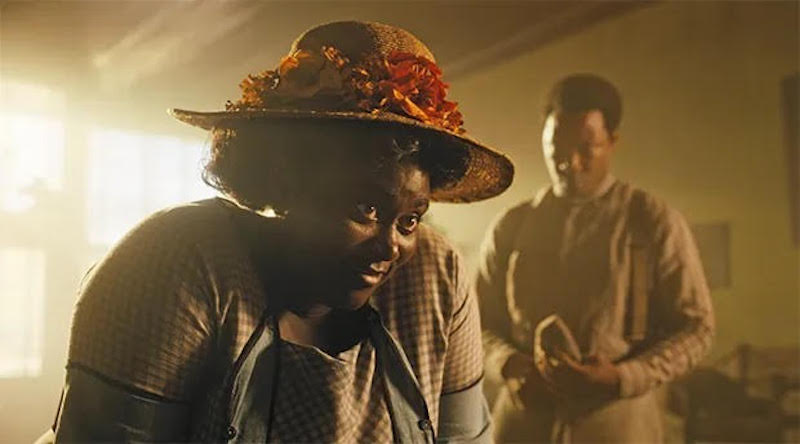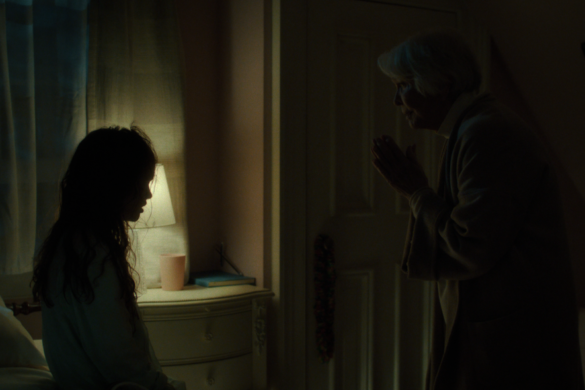Blitz Bazawule’s film adaptation of Alice Walker’s Pulitzer Prize-winning novel, “The Color Purple,” is a visually spellbinding musical tale that pays homage to the original and a new sound.

Set in the early 1900s, “The Color Purple” recounts the life story of Celie (Phylicia Pearl Mpasi as young Celie, with Fantasia Barrino as the adult Celie), a young poor Black woman living in rural Georgia. Separated from her beloved sister Nettie (Halle Bailey as young Nettie, and Ciara as adult Nettie) and then forced into a marriage with an abusive husband named Mister (Colman Domingo), the coming-of-age period drama follows Celie’s journey discovering her voice and independence all the while experiencing the cruelties and joys of humanity.
While this isn’t the first time that Walker’s “The Color Purple” has been cinematically translated from the page to the screen, these remarkable adaptations understand the source material’s cultural relevance. They continue to reach out to new generations and inspire them to find their voice and inner strength. What separates Bazawule’s approach from Steven Speilberg’s film is that the former brings honesty and respect for the imagery and Walker’s words that the former sanitized. It also takes bold risks by using magical realism to visualize Celie’s imagination and dreams as beautiful works of art amplified through Barrino’s incredible singing and acting talents.
Barrino brings an undeniably powerful performance to a film that is both tragic and uplifting and reminds us about love, perseverance, and the strength of the unbreakable bonds of sisterhood. Despite being at the center of this tragedy, Celie is surrounded by those who see her as someone who has yet to discover her inner strength and help educate her about sisterhood. One of her friends is Sofia (Danielle Brooks), a young woman who has made a name for herself fighting oppression and refuses to be pushed around by men like her husband and Mister’s son, Harpo (Corey Hawkins). Sofia exposes Celie to what freedom has to offer and the importance of standing up for yourself. Celie is impressed by Sofia’s unbreakable self-esteem and is jealous of her relationship with Harpo. She encourages Harpo to discipline her wife like a child. After Sofia confronts Celie about her betrayal, Celie confides with her about Mister’s abuse.
When Shug (Taraji P. Henson), a jazz and blues singer and Mister’s long-time mistress, enters the picture, Celie’s life is turned upside down. Celie is in awe of Shug’s strong will and ability to stand up to Mister’s sexual advances. Soon, this friendship develops into something more, and subtlety adds a queer love subplot to this multilayered and emotionally nuanced film. It’s a relationship essential to the storytelling as it reflects upon the themes of love and sisterhood, as Celie and Shug discover they bring out the best in each other.
“The Color Purple’s” message of hope and perseverance in the face of anguish and cruelty is delivered through these beautiful musical numbers. These songs are more than just an extension of the character’s emotions. They are a lyrical visualization of the Black experience. So even though the film and its songs are part of a time long ago, its impactful words still resonate with its community today. And because this is a new telling, the film can connect with a new generation that may not be familiar with its predecessors.
Bazawule’s vision doesn’t shy away from the violence depicted in Walker’s novel. He tells the story in a new way that lets his vision be honest and more faithful to the original source material without sanitizing critical aspects of the story. Though the men are depicted as cruel, they, too, have suffered their own generational traumas, which doesn’t justify how they treat the female characters but helps us understand their individual pains. Mister has to live up to his father’s expectations, which allows us to see where his abuse and womanizing stem from. And we can see how Mister attempts to push that toxicity onto Harpo – which doesn’t take.
While the suffering is true to Walker’s story, Bazawule reminds us there are glimmers of hope in the darkness. He uses Celie’s determination and perseverance to organically lift up the story when needed. The beautiful magical realism gives this telling a new kind of glow thanks partly to its honesty and outstanding new renditions of songs. While Celie’s painful journey is tragic, the film occasionally escapes into a dreamy world that inspires hope. That creative decision allows us to track Celie’s emotional journey. During the transportive “What About Love” number, we are whisked away to a dreamy Art Deco concert where Celie and Shug express their love for each other through an enchanting duet. Watching Barrino sing atop a spinning record while a giant gramophone amplifies her voice as she rotates around Taraji P. Henson soaking in a bathtub is spellbinding. The song itself reflects their love for each other and how they bring out the best versions of themselves.
Dan Laustsen’s cinematography embraces the pages of Marcus Gardley’s script. It transforms Bazawule’s vision into a world that blends the beauty of rural Georgia with the wonder of Celie’s imagination. The latter is a form of escapism that helps push the story forward organically rather than stop to introduce a musical number. These dream sequences peer into a world we cannot see and visualize the pains of abuse and isolation while painting the joys of independence and self-realization. Celie’s creativity would bring levity to the film’s tone whenever necessary. The long takes and wide camera shots allowed the musical numbers to breathe and everything around the frame to be grand, while close-ups on the more intimate musical numbers to understand the character’s grief or joy.
The introductory “Huckleberry Pie” expresses the sisters’ bond and hopes for a better life. At the same time, “the gospel-inspired Mysterious Ways plants the seeds for the film’s main themes. The inspirational “Keep It Movin'” is a song that gives our young characters the determination to overcome the hardships they are experiencing. The two songs give us an idea of the size and scope of the city while also revealing some of the social gaps between this sleepy town and other big cities. “Workin” is a far better song about work that doesn’t shy away from grueling physical labor to earn enough to live. Brooks’ “Hell No!” is an anthem to female empowerment as she refuses to be pushed around by anyone, including her husband Hapro. The “Shug Avery” is a fun musical number that shows the power of the titular celebrity has over the city since she is the daughter of the town’s pastor and the mistress of the long-time Mister. “I’m Here” is a powerful solo that serves as a declaration of her self-worth now that she has gained her freedom and independence.
Francine Jamison-Tanchuck’s costume design brings forth amazing pieces of art that track the character’s emotional journey and time periods. When Shug first enters the picture, we see how her presence has an effect on Celie. She feels a sense of freedom when she first touches Shug’s dress. It’s such a profound piece of fabric that it becomes Shug’s gift to Celie. That one act of kindness taps into something that allows Celie to realize her self-worth and helps her find her independence that had been beaten down by Mister.

“The Color Purple” is a visually striking musical adaptation of Walker’s Pulitzer Prize-winning epistolary novel of the same name. Barrino’s performance is a force of nature that cannot be contained as she moves through the film like the seasons of the year. Her imagination and dreams are all a part of the magical realism that the film pushes but never drifts too far from reality as noted by the practical set pieces and costume designs. This tangible world that Celie creates to escape from the physical and mental abuse is one to give hope for herself while also peering into how she copes with the pain. It’s a role that is supported by Henson and Brooks, both of whom make ample use of their time with their show-stopping performances.
The beauty of “The Color Purple” is how Bazawule is able to weave in a bold and creative vision with the iconic story. Celie’s story of self-discovery and finding the strength to stand up against her domestic and social oppresses is resonating, and the cultural specificities allow the African Diaspora to see themselves in the characters that appear on screen. So even though, this is another film adaptation of Walker’s novel, Bazawule takes it to places where its predecessors dare not go, and Barrino, Brooks, and Henson give dazzling performances and add a new kind of sound to make it into a timeless classic.
10/10











